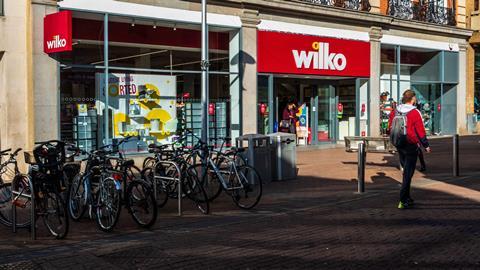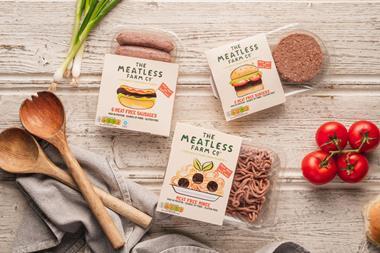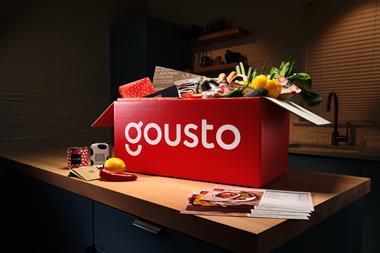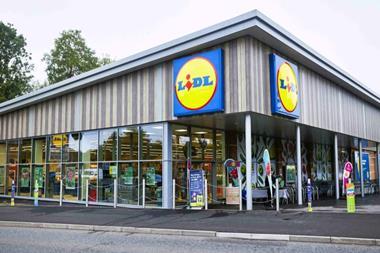Wilko may have lost some relevance in recent years, but it will still be fondly regarded by millions, having risen to become the dominant discounter on high streets following Woolworths’ 2008 collapse.
On Thursday, the 93-year-old family-owned retailer followed Woolworths again – this time, by collapsing into administration, after days of failed rescue talks. It had filed a notice of intention to do so a week earlier.
It puts 12,000 jobs at risk, along with Wilko’s 400 stores. While administrator PwC said there would be no immediate redundancies or closures, both are likely if buyers for some or all of the group are not found.
The collapse follows months of Wilko scrambling to find new financing – during which it explored the sale of a majority stake in the family-owned business. It also hoped to achieve rent cuts in a company voluntary arrangement that never got off the ground. Landlords were expected to reject the terms in a creditor vote.
Some will say the writing has been on the wall for longer. The cracks in Wilko’s liquidity were showing in its latest full-year accounts, covering 2021/22. These warned it could run out of cash in the event trading significantly worsened, and said the company was in talks to secure financing. The retailer recorded a £35.9m operating loss, marking its fourth consecutive year of declining sales.
In November last year, it raised £48m by selling its DC in Worksop in a leaseback deal. That was followed by a £40m two-year revolving credit facility from lender and Homebase owner Hilco UK in January, leaving some questioning the apparent reluctance of then-Wilko chair Lisa Wilkinson – granddaughter of JK – to stump up family money. “If she was prepared to co-fund some of this, it would be easier,” a City source said at the time.
In the same month, hundreds of roles were cut in Wilko stores, and about one in four in its head office, as part of a cost-cutting turnaround plan. But Wilko’s problems were compounded when a trade credit insurer withdrew cover, prompting some suppliers to halt deliveries and creating gaps on shelves.
Supply chain choke
When Wilko tried to fill the gaps using new suppliers, they wanted payment in advance, which it refused.
“It was clear a load of big suppliers had stopped, as there were so many products missing, empty shelves or ridiculous over-facing of those continuing,” says a supplier source.
“A number of small suppliers had the opportunity to get listed. Those suppliers are now relieved they refused.”
These issues were exacerbated by Wilko failing to settle on a leadership team, says Savvy Marketing CEO Catherine Shuttleworth.
It means those appointed had little time to implement a strategy before “they brought in somebody else”.
CEO Jackson was appointed in December, replacing Jerome Saint-Marc, then-chief since 2020. CFO Dave Murphy was appointed in February, when he replaced Karen Mackay, who had also been in since 2020.
“There’s been a lack of consistency and in any business that will tell,” says Shore Capital analyst Clive Black.
Recent leadership changes also included Lisa Wilkinson stepping aside as chair, remaining on the board as family director – a move announced alongside the Hilco funding.
Read more: How ‘loved’ high street discount retailer Wilko came to trouble
In the background, Wilko was struggling with modernising supply chain principles that simply divvied up stock between its 400 stores, sources at the retailer told The Grocer in May. It had, for example, been running multibuys on heavy bags of compost at stores that were hard to reach by car.
“Simply filling the store with stock to the size of the store isn’t exactly the most shopper-centric approach,” says Black.
Wilko “would make decisions based on no strategy whatsoever on ranges and stock”, says another supplier source.
Location was another issue. Wilko was also planning to move to better-trading locations – the majority suffered from declining footfall in high streets (see above) – but only after the business had been stabilised.
Retail Economics CEO Richard Lim says: “The back-to-store shift we’ve seen since the pandemic has largely benefited retail parks, where they [Wilko] are underrepresented compared with their peers,” such as Poundland, The Range, B&M and Home Bargains.
| How Wilko stores are split between location types | |
|---|---|
|
City Centres |
8% |
|
Local Malls |
3% |
|
London Suburban Centres |
6% |
|
Major Town Centres |
17% |
|
Regional Malls |
1% |
|
Regional Towns |
23% |
|
Retail Parks |
3% |
|
Rural Towns |
4% |
|
Satellite Centres |
10% |
|
Satellite Towns |
7% |
|
Shopping Parks |
5% |
|
Suburban Centres |
9% |
|
Not in RF Centre |
4%
|
Source: CACI Local Footprint location classification
Lagging behind rivals
Sales growth would come from online, Wilko hoped, boosted by the rollout of click & collect to all stores in February.
Shuttleworth questions this: “A lot of the discounter sector doesn’t bother too much with online, because there is not enough margin in it,” she notes.
It is likely why B&M ditched an online pilot after about seven months earlier this year.
Failure to keep up with B&M and other rivals helped seal Wilko’s fate for good.
“The supply chain issue comes down to bad management, but the basic problem is consumers have plenty of choice in discount non-food, and Wilko is squeezed from all sides,” says retail analyst Nick Bubb. “I think competition from the non-food aisles of Aldi and Lidl hasn’t helped its cause.”
Possible rescuers are reported to have included specialist investor and Laura Ashley owner Gordon Brothers, in talks leading up to Thursday. Hilco had also been tipped as a likely bidder, having so far invested £45m, including the £40m revolving credit facility.
Now Wilko is in administration, “even if PwC is successful in securing the business going forward, it is likely that some stores will see permanent closure,” says Finella Fogarty, head of insolvency practice at law firm RPC.
What creditors receive “will depend entirely upon what is left in the pot after paying costs of the administration, secured and preferential creditors”, says Tania Clench, legal director in the restructuring and insolvency team at Cripps. And worryingly, Wilko’s workers may lose out on pay.




















No comments yet